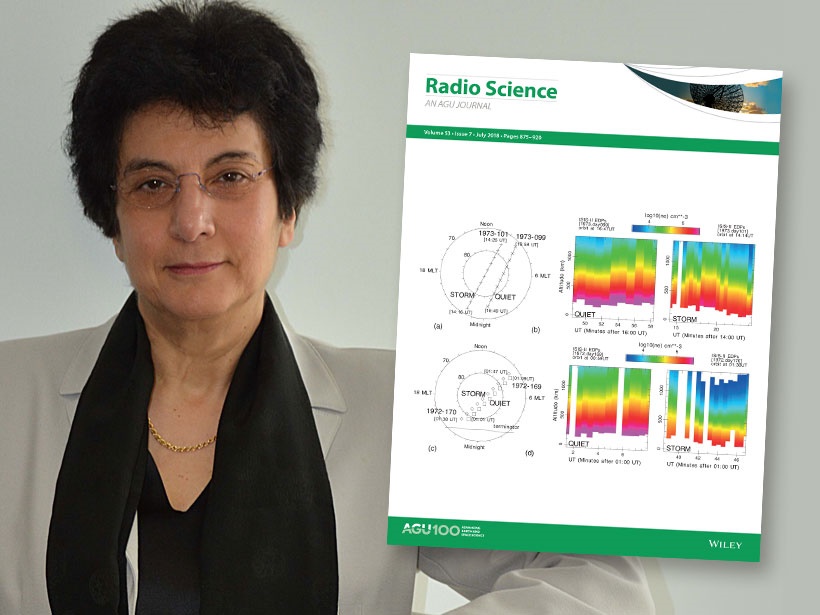We are delighted to announce that Sana Salous, currently an Editor for Radio Science, will become the journal’s next Editor-in-Chief. She will officially start on 1 January 2019, but has already begun the transition process. We asked her some questions about her own research interests and her vision for the journal.
What is the focus of your own research?
For many years, I have conducted research on radio wave propagation across a wide range of frequencies ranging from the HF band for long range radio links via the ionosphere, propagation in the UHF band for mobile radio networks for third generation (3G), and, more recently, in the higher frequency bands extending up to 100 GHz for fifth generation (5G) fixed and mobile radio links.
For each of these studies, custom designed radio channel measurement equipment using the frequency modulated continuous wave (FMCW) technique were designed, realised and calibrated. This facilitated the accurate estimation of the radio channel characteristics experienced over radio links in the built environment or due to rainfall or snow.
Another area of my interest is the design of radar waveforms and associated propagation effects such as penetration loss into building for through-the-wall applications or for long range applications such as sea state radar. The application of digital frequency synthesis for the generation of the FMCW signal in both the sounders and radars employed in my research enabled studies over very high bandwidths for detailed channel characteristics and resolution of detailed features when used in the ultrawideband radar application.
What does it mean to you to serve as Editor-in-Chief of Radio Science?
Radio Science was the journal where I aspired to publish my first research paper about ionospheric propagation. Over the years, as my research diversified into the higher frequency bands, I continued to publish my scientific research results in Radio Science where appropriate. So, Radio Science has a special value for me.
Over the past eight years, I was fortunate to have acted first as an Associate Editor when Paul Cannon was Editor-in-Chief, then as Editor during Phil Wilkinson’s tenure as Editor-in-Chief. With their vast experience and leadership in the International Union of Radio Science (URSI), which is closely associated with Radio Science, I saw the journal flourish and broaden its scope. Stepping up to serve as the next Editor-in-Chief is a great honour.
How do you plan to take the journal forward in the coming years?
My main goal is to continue to attract high quality publications in the broad area of the journal. A year ago, we added Technical Reports: Methods as a paper type which permits researchers to publish instrumentation and experimental methods. This really enhances the portfolio of the journal. I hope to see an increase of submissions of this kind of paper as it provides an avenue for researchers to publish their instrumentation followed by the scientific results as a research article in the same journal.
It is my intention that special collections associated with URSI conferences and the general assembly will continue to play an important role in the journal. I would also welcome proposals for special collections on novel and current research topics in radio science, as well as review papers from prominent researchers.
—Sana Salous (email: [email protected]), School of Engineering, Durham University, UK
Citation:
Salous, S. (2018), Introducing the new editor-in-chief of Radio Science, Eos, 99, https://doi.org/10.1029/2018EO108655. Published on 09 November 2018.
Text © 2018. The authors. CC BY-NC-ND 3.0
Except where otherwise noted, images are subject to copyright. Any reuse without express permission from the copyright owner is prohibited.

